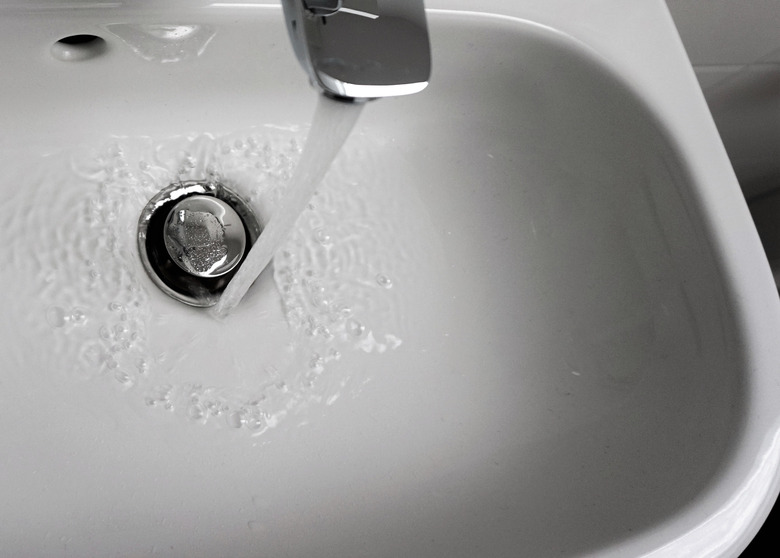How To Get Rid Of Drain Flies And Worms
A small fly or worm-like creature spotted in the bathroom or kitchen one day may not seem like a big deal. But when his relatives show up and you spot flies near the drain every day, something's amiss. Getting rid of these pesky pests is simply a matter of cleaning out the pipes to eliminate their ideal living environment.
Drain Flies, Explained
Drain Flies, Explained
Drain flies, sometimes called moth flies, are tiny insects about the size of fruit flies. Unlike fruit flies, however, they're not after ripening tasty treats left out on the kitchen counter. Drain flies prefer the damp, slimy environment inside the pipes of sink, shower and tub drains. Their larvae look a bit like tiny, skinny worms. In some instances, these wormy larvae may be noticed in a toilet tank or in stagnant water pooling in the bottom of a seldom-used shower or sink. Drain flies don't bite, so they're more of a nuisance than an actual threat around the home.
Why They're There
Why They're There
Because drain flies like damp environments, an ideal home for them is in a guest bathroom sink or shower drain, or in a kitchen drain. These flies sometimes show up after you've been out of town for a while, as they prefer a stagnant damp environment to one with frequently flowing water. They eat the decomposing matter stuck to the insides of drain pipes, especially in showers, tubs and kitchen sinks. If you've noticed drain flies in a kitchen or bathroom, that means one of the drains needs to be cleaned.
Finding the Source
Finding the Source
If you aren't sure which drain houses the flies, it's easy enough to find out. Tear off a piece of clear packing tape several inches long and place it in a bridge shape over the sink drain, sticky-side down. Do the same for the tub or any other drains nearby. Don't press the tape all the way down; leave air gaps. Leave the tape overnight or even for two days, if possible. Drain flies will get caught on the tape as they exit their home drain.
Getting Rid of the Flies
Getting Rid of the Flies
Once you've determined the source of the flies, it's time to take action. Discard the tape, then use a metal pipe brush to scour the inside of the pipe walls connected to the drain. Boil some water in a tea kettle and carefully pour it down the drain, avoiding splashes to prevent burns. Wait 30 minutes or so, allowing time for the pipes to cool back down, then pour in an enzyme-based drain cleaner. Enzymes eat organic matter that drain flies love, therefore removing some of their food source. Follow the directions carefully, as enzyme cleaners often take several hours to work. The enzymes also help prevent future buildup.
Pour boiling water down the drain twice a day for a week or so, until drain flies are no longer evident in the area.
Routine Maintenance
Routine Maintenance
The best way to deal with drain flies is to do as much as possible to prevent them in the first place. If several sinks, tubs or showers in your home aren't used frequently, run hot water in them for a minute or so every week. Keep the other drains in the house clean by pouring half a cup baking soda into each, followed by an equal amount of white vinegar. Let the mixture foam for several minutes, then run hot water to rinse the pipes out.
